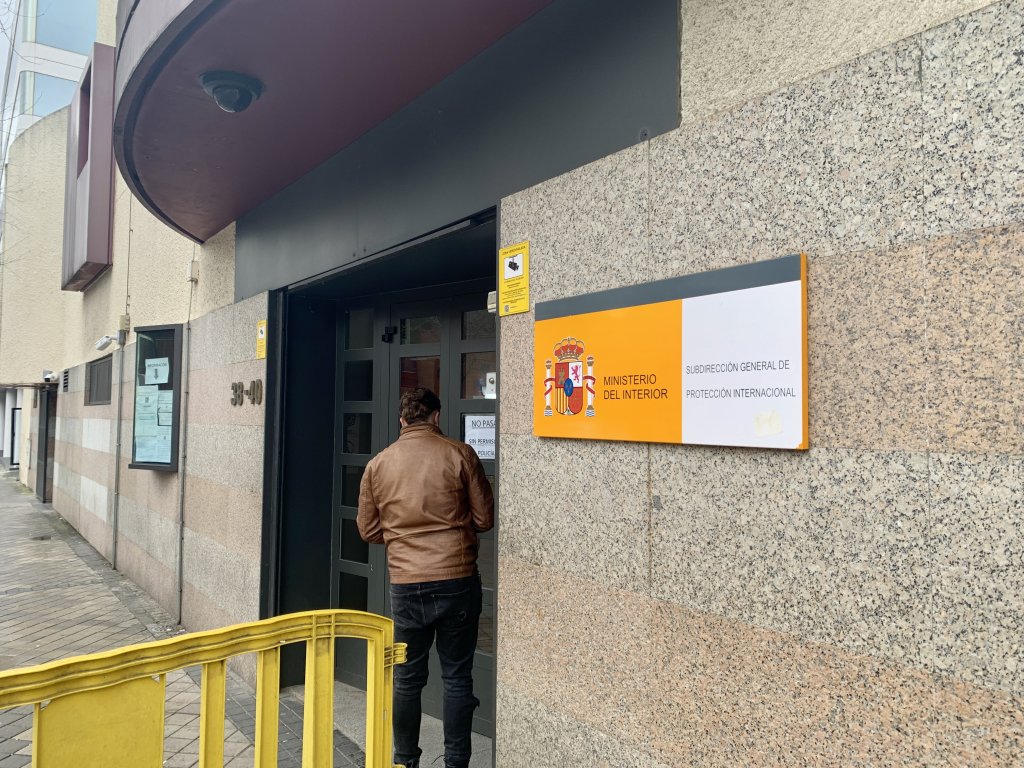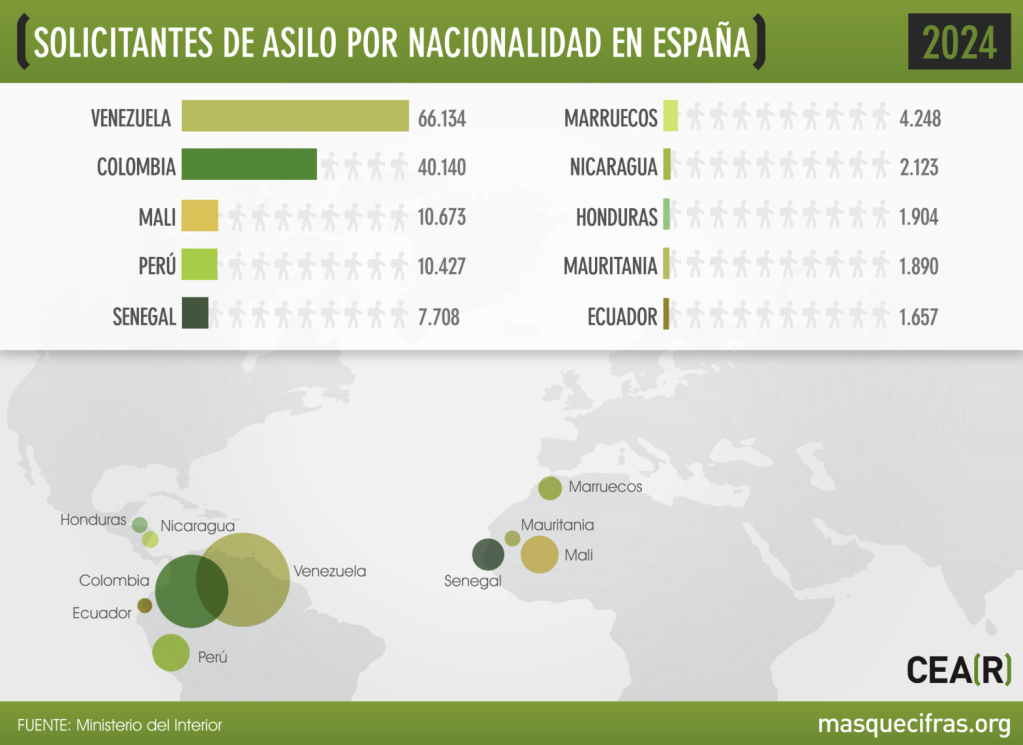Migrants from countries that Spain considers ineligible for asylum must often wait weeks and even months to file their application for international protection. They rarely suceed in obtaining asylum status. Madrid’s preference for work-related immigration partially accounts for their difficulties.
“I requested asylum when I came here a year ago. It seemed reasonable, given my past.” Like Ousmane*, originally from Senegal’s Casamance region, thousands of migrants request international protection in Spain every year. The country received over 26,400 files since the beginning of 2025, with most of the applicants from Venezuela, Colombia and Mali. The asylum office recorded a total of 167,366 requests in 2024, representing a small increase compared to 163,000 requests in 2023. Both years witnessed record-breaking levels of asylum seekers arriving in Spain since it established its system of international protection in the 90s.

Though Spain’s asylum system is increasing in demand, it isn't always accessible. "When I first came to Tenerife [in the Canary Islands, editor's note], I immediately told the authorities of the center that I wanted to submit my application. They told me, 'You have to do it on the peninsula.' When I was transferred to Madrid, I made the same request. They told me, 'The asylum application is in Tenerife,'" said Ousmane with a bitter smile. "I completely didn't understand. I was finally able to submit my application after several weeks, but the period of uncertainty was really stressful."
Abdoulaye*, another Senegalese who found shelter at the Alcalá de Henares center near Madrid when he arrived in August 2024, had to wait even longer. "I spoke about my [asylum] request to the Accem association [in the center, editor's note] on my first day there. They told me I had to be patient, because there were a lot of people in the same situation as me. It was psychologically very difficult to wait because I was under pressure. I wasn't used to waiting like that, without a project, without doing anything," he said. His application was finally submitted almost six months later, at the end of January 2025.
"Difficulty accessing the asylum procedure is the first problem asylum seekers encounter upon arriving here," said Mauricio Valiente, director of the Spanish Commission for Refugee Aid (CEAR), a Madrid-based NGO. "The administration, including the asylum offices and the police, is saturated. Migrants are bounced from office to office and region to region as a result. Sometimes a year goes by before they even submit their application."
Abdoulaye regrets having "lost a lot of time” due to this delay. "I want to continue my studies, to integrate into Spanish society. Even though today I'm relieved, I feel like my plans were put on hold."
Read AlsoSpain: More than 1,500 migrants arrive in the first half of this week
The lowest protection rate in Europe
Migrants who manage to file an application still need to obtain protection. This outcome is far from guaranteed. Spain had one of the EU’s lowest approval rates, 12 percent compared to the European average of 42 percent, according to a CEAR report. Spain’s approval rate increased slightly to 18.5 percent in 2024.
These statistics reflect a "very restrictive" Spanish "protection model," said Valiente.
Citizens from Colombia, Peru, Morocco, Senegal, and Honduras were the most impacted by these rejections in 2024, according to the Ministry of the Interior. Conversely, Mali, Venezuela, Somalia, and Sudan are among the countries with the highest acceptance rates, at over 90 percent. "You must be from a country at war, or from a place in the grip of a serious conflict, to be guaranteed protection. Reports of persecution or discrimination have little resonance with the authorities," said Ana Alañon, a lawyer specialized in immigration law at the Humanism and Democracy Foundation (Fundacion Humanismo y Democracia).

"Spain is not traditionally a country of asylum, like Sweden or Germany. The country has always based its immigration policy on labor flows rather than protection -- except for a specific regime reserved for Venezuelans," said Élisa Brey, professor of sociology at the Complutense University of Madrid. "Moreover, the country was a dictatorship until 1975. It was a country of emigration rather than immigration for a long time. It was only in the 1990s, when Spain joined the European Union, that it was required to adopt an asylum law and address the issue."
Read AlsoAssessing Spain's migrant work reform, two years on
'Strengthening labor immigration'
For rejected asylum seekers like Ousmane, the remaining solution is "arraigos" residence permits, reserved for people in an irregular situation. Yet there is one requirement: applicants must be able to prove, depending on the permit, that they have been in the country for two or three years without papers. The Spanish government has initiated several reforms to facilitate obtaining these permits in recent years. A new type of "arraigo," the "second chance arraigo," will be introduced on May 20, specifically for people who have exhausted all existing options, including asylum seekers who have been refused.
*Names have been changed at the request of the individuals concerned.
